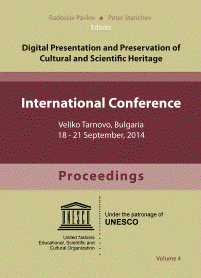Cost Analyse of 3D Digitisation Techniques
DOI:
https://doi.org/10.55630/dipp.2014.4.24Keywords:
Cost, 3D digitisation, Laser Scanner, Photogrammetry, Structured light, CT, μ-CTAbstract
In the framework of the Belgian BELSPO AGORA 3D and DIGIT03 programs, we have evaluated 3D digitising technologies with regards to the quality of the acquisition, the capacities and limitations of each technique and also the direct cost of the different 3D digitisation processes. It is on this latest topic that the paper is focused. In order to evaluate the cost of 3D digitisation, we considered the time for the digitisation, cost of the equipment and cost of the staff. Our preliminary results show that the real cost by specimen depends on the amount of specimens to digitise. Techniques that appear to be low-cost can be the most expensive in the framework of massive digitization programs, whilst more expensive equipment can be more efficient in the long term. Therefore low-cost equipment is mainly recommended for occasional digitisation or small series of digitisations.References
Smithsonian X 3D http://3d.si.edu/ (accessed 10 Jun. 2014)
Friess, M., 2012. “Scratching the surface? The use of surface scanning in physical and paleoanthropology”, Journal of Anthropological Sciences, Vol. 90, pp. 1-25.
Mathys, A. (et al.), 2013a. “Agora 3D: evaluating 3D imaging technology for the research, conservation and display of museum collections,” Antiquity Project Gallery, vol. 087, issue 336, June 2013 (http://antiquity.ac.uk/projgall/mathys336/)
Slizewski, A. (et al.), 2010. “Surface scanning of anthropological specimens: nominalactual comparison with low-cost laser scanner and high end fringe light projection surface scanning systems,” Quartär, vol. 57, 2010, pp 179-187.
Waller, (et al.), 1996. Reconstruction of museum specimens. Nature 380: 209-210.
Rachel, M. (et al.), 2012. The Digital Fish Library: Using MRI to Digitize, Database, and Document the Morphological Diversity of Fish. PLoS ONE. doi:10.1371/journal.pone.0034499
Mathys, A. (et al.), 2013b. Agora 3D. Low cost 3D imaging: a first look for field archaeology. Notae Praehistoricae, 33, pp. 33-42.
Agisoft http://www.agisoft.ru/ (accessed 22 Jul. 2014)
LMI Technologies http://www.lmi3d.com/products/hdi/advance/ (accessed 22 Jul. 2014)
MechInnovation Limited http://www.mechscan.co.uk/ (accessed 22 Jul. 2014)
Bruker http://www.skyscan.be/home.htm (accessed 22 Jul. 2014)
Mathys, A. (et al.), 2013c. Comparing 3D digitizing technologies: what are the differences? A. C. Addison (et al.) (Eds.): Proceedings of the Digital Heritage International Congress 2013. Vol. 1. Marseille: CNRS. (PR) ISBN: 978-1-4799-3169-9.
Acknowledgements
We thank all the members of the Agora3D project and COSCH projects. This research is funded by the Agora Project (AG/00/164). We also benefited from the experience of members of the COSCH network (Cost Action TD-1201). We thank Tara Chapman for the proofreading.




